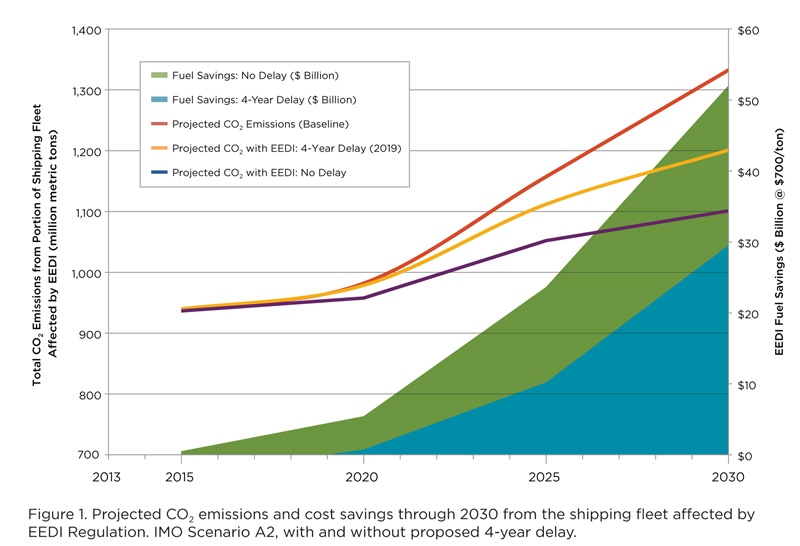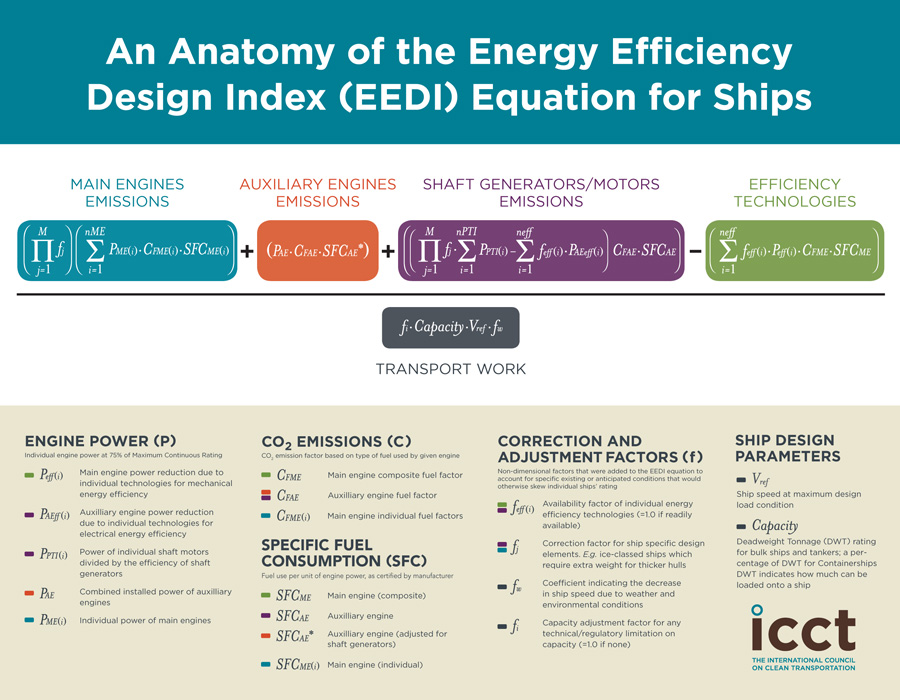Policy update
The Energy Efficiency Design Index (EEDI) for New Ships
At the July 2011 session of the International Maritime Organization’s Marine Environment Protection Committee, the represented Parties to MARPOL Annex VI adopted amendments to Annex VI Regulations for the prevention of air pollution from ships. Considered the first regulation to establish CO2 standards across a global sector, the Energy Efficiency Design Index (EEDI) had been a central topic of discussion and development at the MEPC over the last four years. These amendments add a new Chapter 4 to Annex VI that focuses on the energy efficiency of large ships and mandates an increasingly stringent EEDI score for the majority of new vessels.
The regulation will require most new ships to be 10% more efficient beginning 2015, 20% more efficient by 2020 and 30% more efficient from 2025. If implemented according to this time schedule, the ICCT projects that up to 263 million tonnes (Mt) of CO2 will be reduced annually by 2030. While the EEDI will add capital and implementation expense related to next-generation ship designs and technology, these costs are more than offset by projected savings up to 75 Mt and $52 billion of fuel annually.
The passage of EEDI regulation came with one important compromise that could affect the magnitude of benefits in the near term. As a concession to countries that were concerned about the capacity of their shipyards to develop and deploy necessary technologies, individual flag administrators will be allowed to defer mandatory EEDI requirements for up to four years beyond the planned implementation dates. It is likely that many flag authorities will request the delay, but more difficult to project how many ships would actually defer producing EEDI compliant ships, The EEDI comes at a time when many sectors are experiencing substantial growth and unilaterally developing more efficient ships to serve the demand, so the effect of any delay is likely to be diminished.
The EEDI estimates ship CO2 emissions per ton-mile of goods transported relative to a reference average of similar ships. The full equation (detailed in MEPC.1/Circ.681) includes several adjustment and tailoring factors to suit specific classes of vessels and alternate configurations and operating conditions.
Download the update for a more detailed description of key elements of the EEDI and a discussion of likely benefits and expected future developments.


